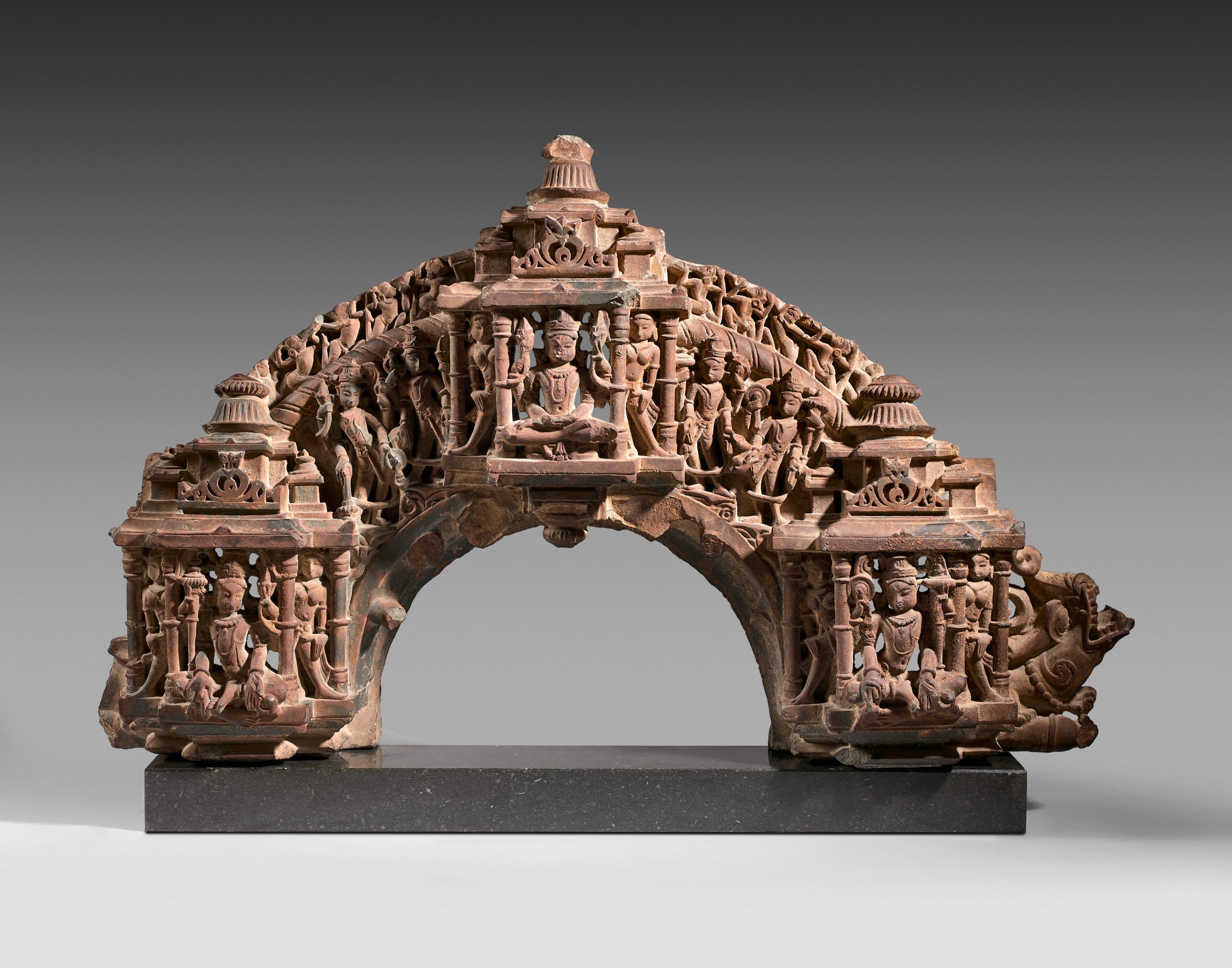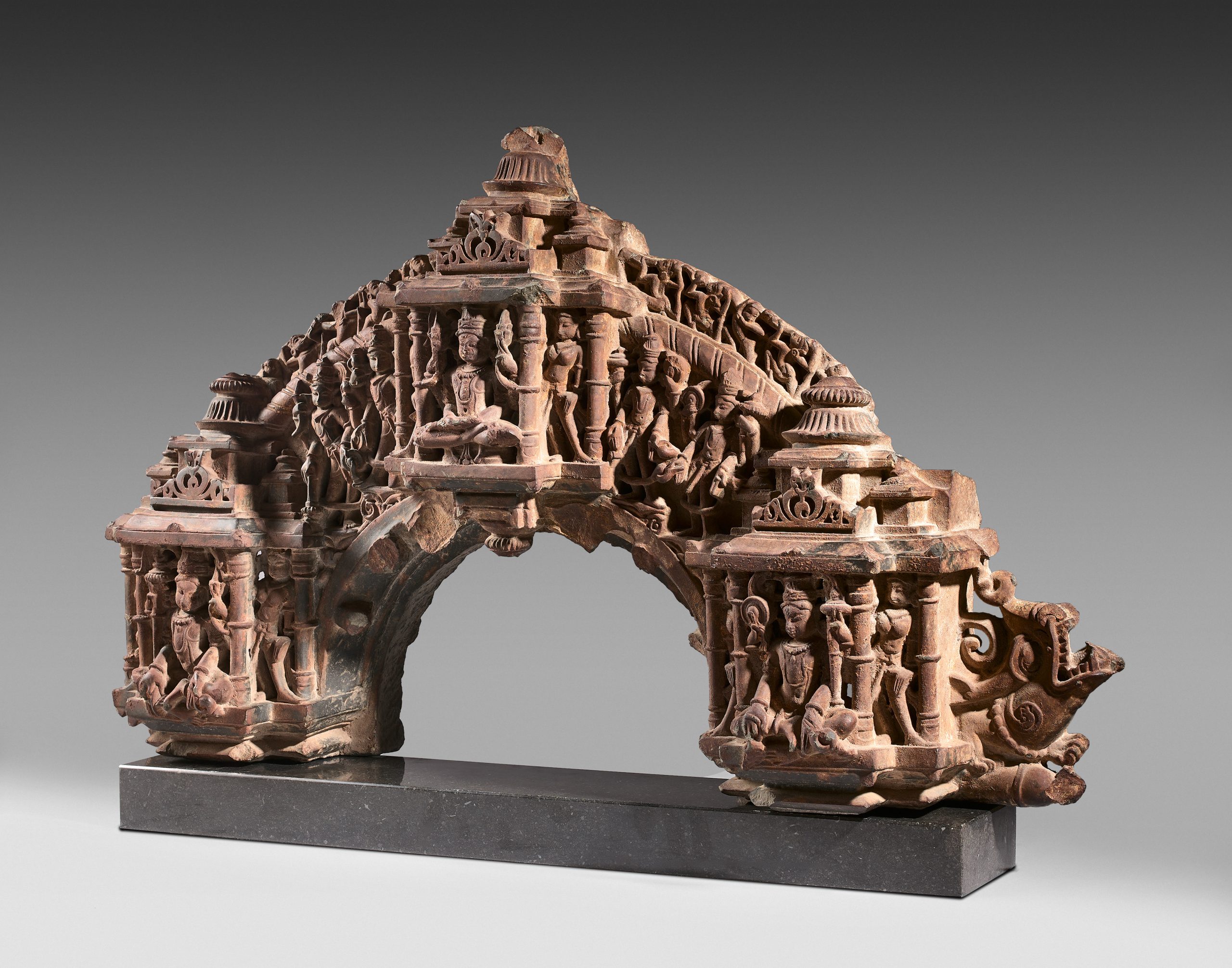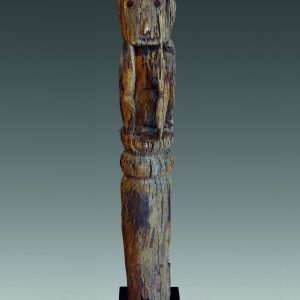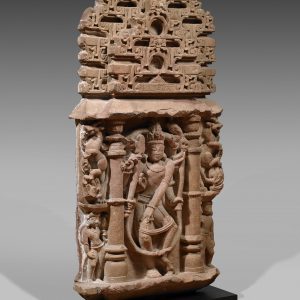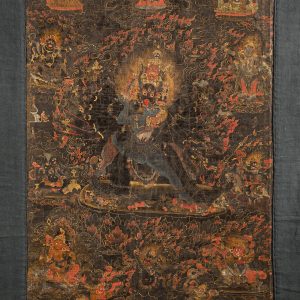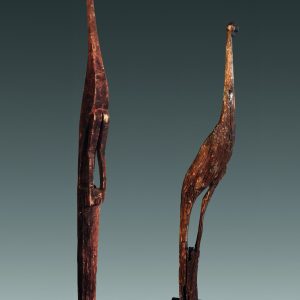Architectural fragment
28 000,00€
Sandstone
Northern India, Rajasthan
11th-12th century
H. 51 cm, L. 85 cm
Description
This arch belonged to the prabhatorana of a stele representing the god Vishnu. Remarkable for its architectural effect, the arch is composed of three chambers modelled on the structure of temples. Within each of them is a form of the god Vishnu, holding his attributes. Protector of the universe, he wears the royal tiara (kirīta). He holds the mace (gadā) in his and the wheel (cakra). He is also holding a conch shell, another classic attribute of divinity. Beside them stand Devatās, whose lack of attributes makes it impossible to formally identify them as his wives, Lakṣmī, goddess of good fortune, and Sarasvatī, goddess of knowledge, wisdom and the arts. Hidden behind the colonnades, they would therefore appear to be secondary female deities, with a purely decorative role, as was customary during the medieval period.
The structures are linked by various representations of Vishnu, surmounted by a frieze of worshippers. A large ribbed fruit (āmalaka) crowns the edifice. On the right is a fragment of a makara protome, a mythical animal that is half crocodile and half elephant. This chimera, a symbol of the sky, guarantees abundant rainfall. It traditionally appears at the top of many sculptures. This detail suggests that the fragment is part of a larger whole.
The overall effect is one of exceptional finesse, with a multiplicity of details and a particular lightness due to the openings that bear witness to the sculptor’s skill. Balanced and harmonious, this work is a superb example of medieval sculpture.
Provenance: Jean and Marcel Nies Collection, 1981, then Galerie de Ruimte, and private collection in the Netherlands.

